I bet you’re thinking, “to write a post on photographing bands in the 1970s, this person must be pretty old”. Well, I have to say that I am, and so happy to have grown up in an era where all the classic rock band recorded and performed. Bands like Led Zeppelin, The Who, Queen, David Bowie (above, shot in 1976), and many, many more.
I had the pleasure to see them live, but to have photographed them during their performances. The early 1970s was a time when you could see three bands for $4.00. When Led Zeppelin performed in 1973 when I photographed them, the tickets were $6.00 and was appalled they could charge so much for a concert.
Growing up in the San Francisco area, I was only about 25 miles from our favorite music venue, Winterland Arena. By the time my friends and I were seeing bands, The Filmore was closed, and Winterland was the place to see bands. It was OK to bring your camera into the arena to take pictures of the musicians during these times. My friends and I would generally get to Winterland Arena around 9:00 am or sooner so we could be first in line, which was vital to us so we could be right up against the stage. The stage at Winterland was only about 5′ tall, so we could look up and shoot. My friend Dave Miller and I were the only shooters out of the four friends.
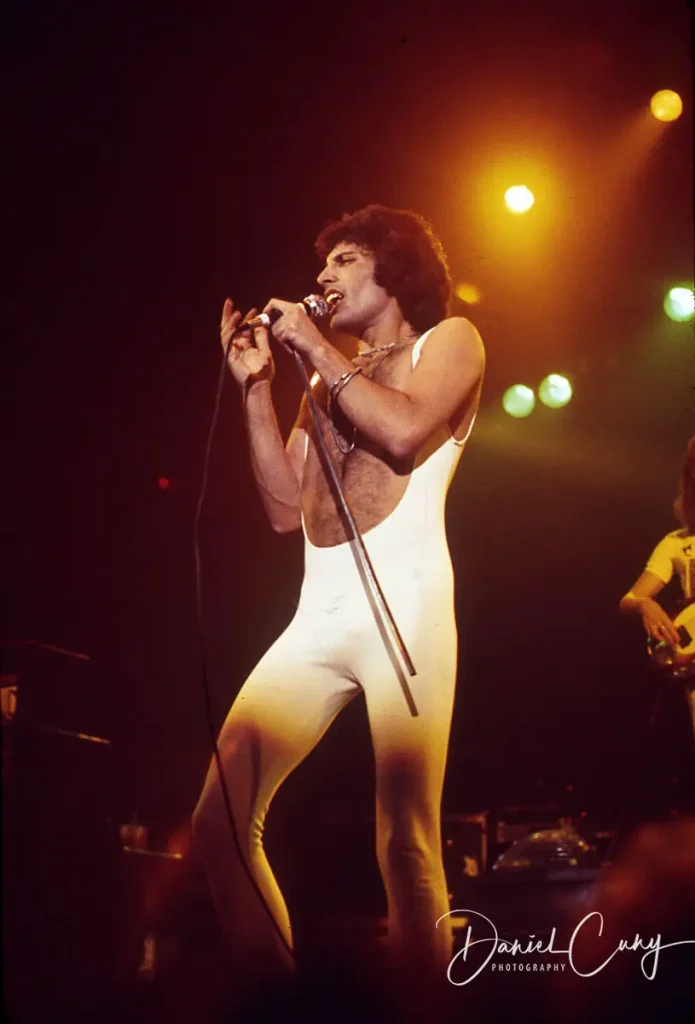
Please remember, in the 1970s, digital photography wasn’t even a thought. The current digital cameras have at a dynamic range of 10-12 f-stops at least, and the files now can be manipulated so easily. Back when I was shooting, the highest color film speed was Ektachrome 200, with an ISO of 200, which you could push process one-stop by Kodak for an extra fee, taking it up to ISO 400.
Tri-X was the black and white film of choice with an ISO of 400, which kept it simple for the photographer. No need to change ISO on the camera when using the meter. The camera I started shooting with was a very simple Kodak Pony 35, which I used for 1-2 shows, and got some decent results.
My brother, Tim, at the time, had a Praktica 35mm camera with a 50mm and a 200mm lens. Around the 3rd concert, I asked him if I could borrow it to photograph with it. He was reluctant at first, but my persistence wore him down, and he let me. After the first show, I didn’t ask, I just used it, which he didn’t mind. After about ten shows, I bought a Nikkormat which I loved.
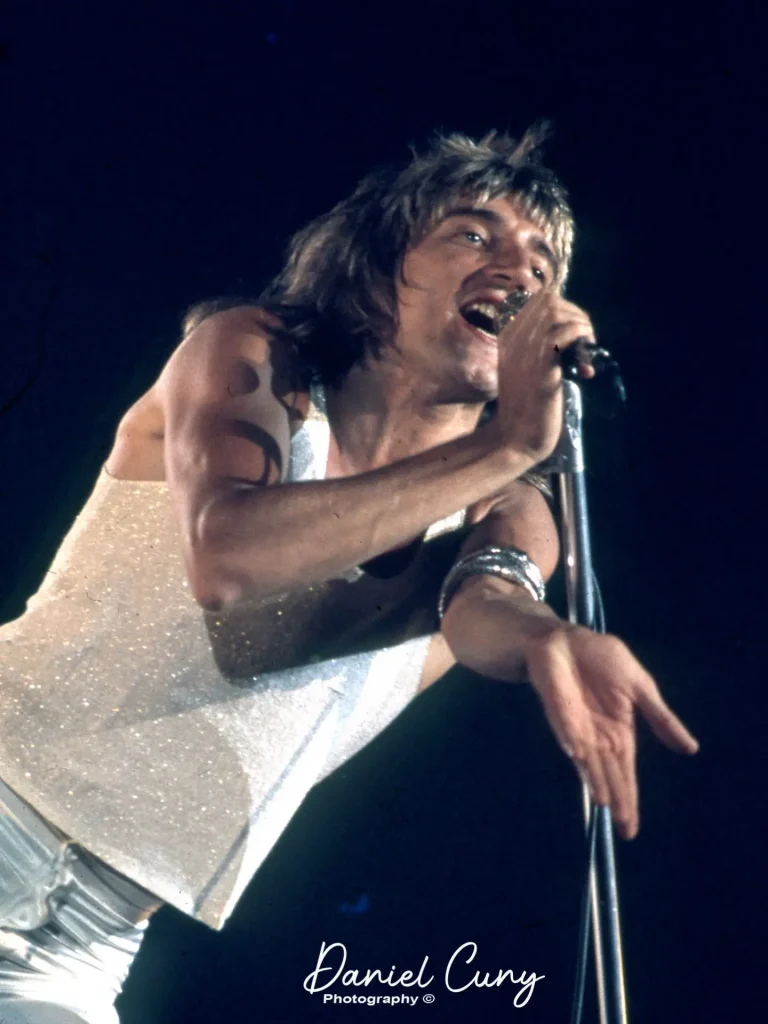
After the first couple of shows, and not having a light meter in my camera, I realized that settings of 1/60-1/125 shutter speeds and aperture settings of 2.8 to 5.6 were getting good results. The lighting at the shows was mainly non-contrasty colors, like red, green, and blue, so when the performers were in this kind of lighting situation, I opened up my aperture.
When the performers were in a little more contrast situation with yellows and white spotlights, I needed to shoot faster shutter speeds and stop my aperture down. Some shows used a lot of spotlights, and I would go to a shutter speed of 1/250, but that was only for the bigger arena shows.
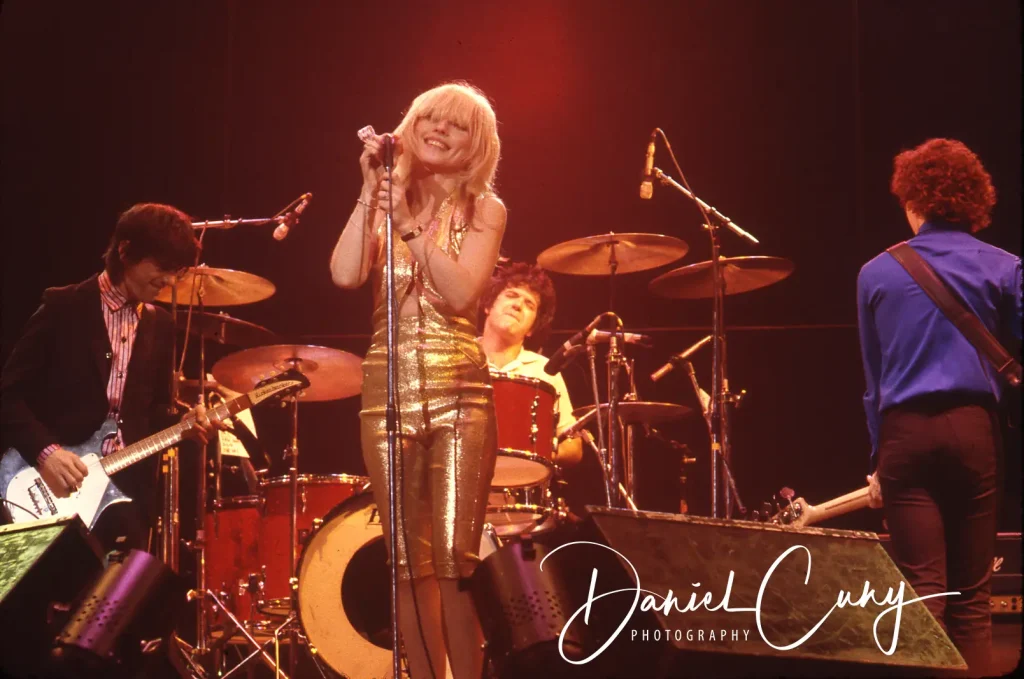
When I got my Nikkormat, I thought it might get more natural as it now had a light meter in the camera. Since I was always shooting at ISO 400, I had the luxury of setting the ISO once on my camera, and not changing it with different films. During the first show with the Nikkormat, I noticed the settings were different from those I used with my other non-meter cameras. I took one roll using the meter and the other rolls using the old tried and true method.
The photos with the meter I took were overexposed, and the ones using the tried and true method were great. I thought to myself, “why did this happen”? Then it hit me, the cameras of that era use average metering. There was no internal spot meter. That means the camera looks at the whole image and exposes to what it sees on average as opposed to the brightest object. It comes down to, “how much does the performer fill the frame”?
The majority of my shots I’m shooting in a very dark situation, except for the light on the performer, so the performer was overexposed when I used the meter because he/she wasn’t filling the frame. This is especially true when shooting from the audience and not being close to the stage. From then on, unless the performer filled the viewfinder, I couldn’t trust the meter and the method I started with worked all through my career shooting bands.
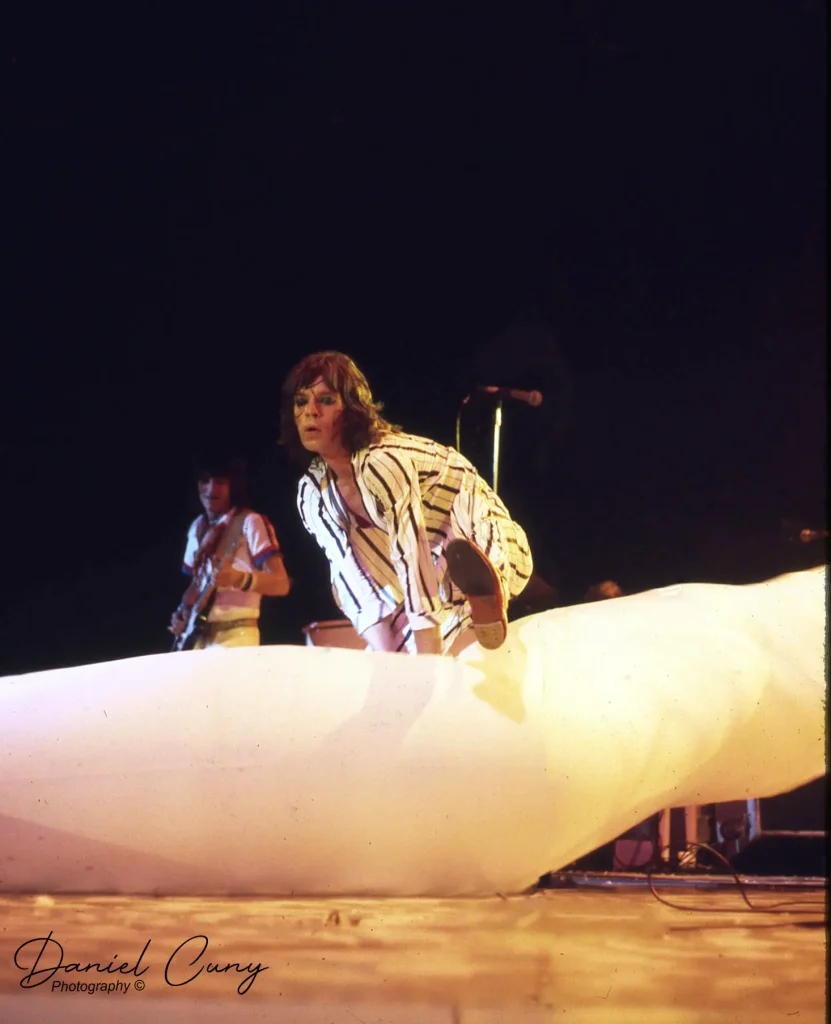
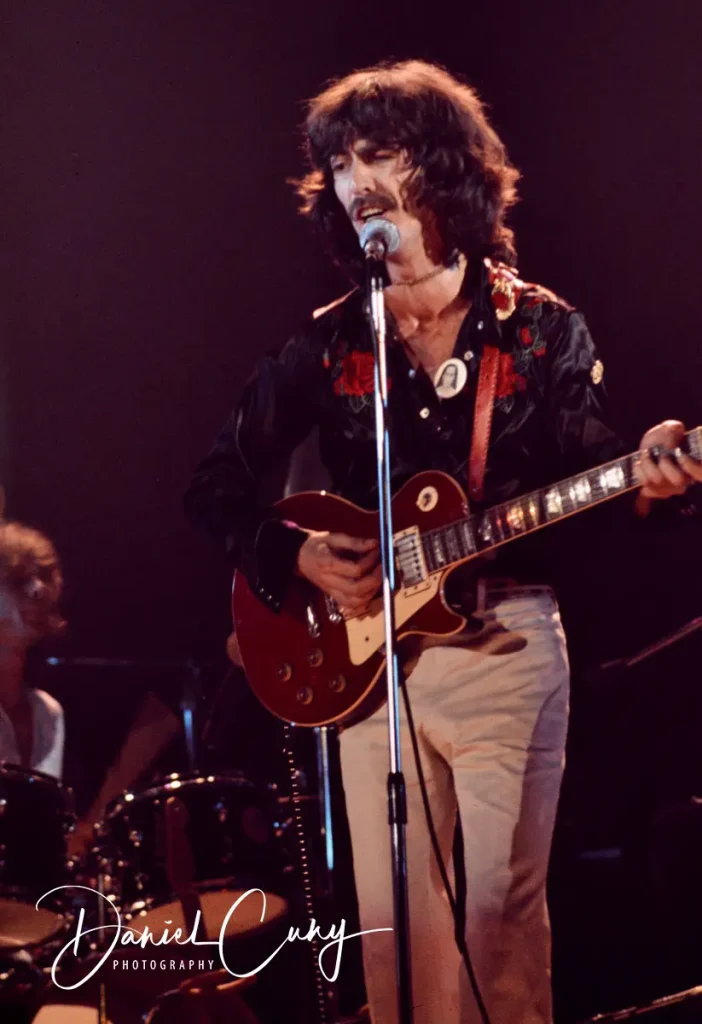
The first concert I photographed was Humble Pie on April 22, 1972, and I carried this shooting process through my teens through my days at Fantasy Records shooting jazz concerts through the late ’70s and more personal and paid gigs into the mid-1980s.
Thank you for taking the time to read my post. You can see more concert images on my website and Instagram.
Share this post:
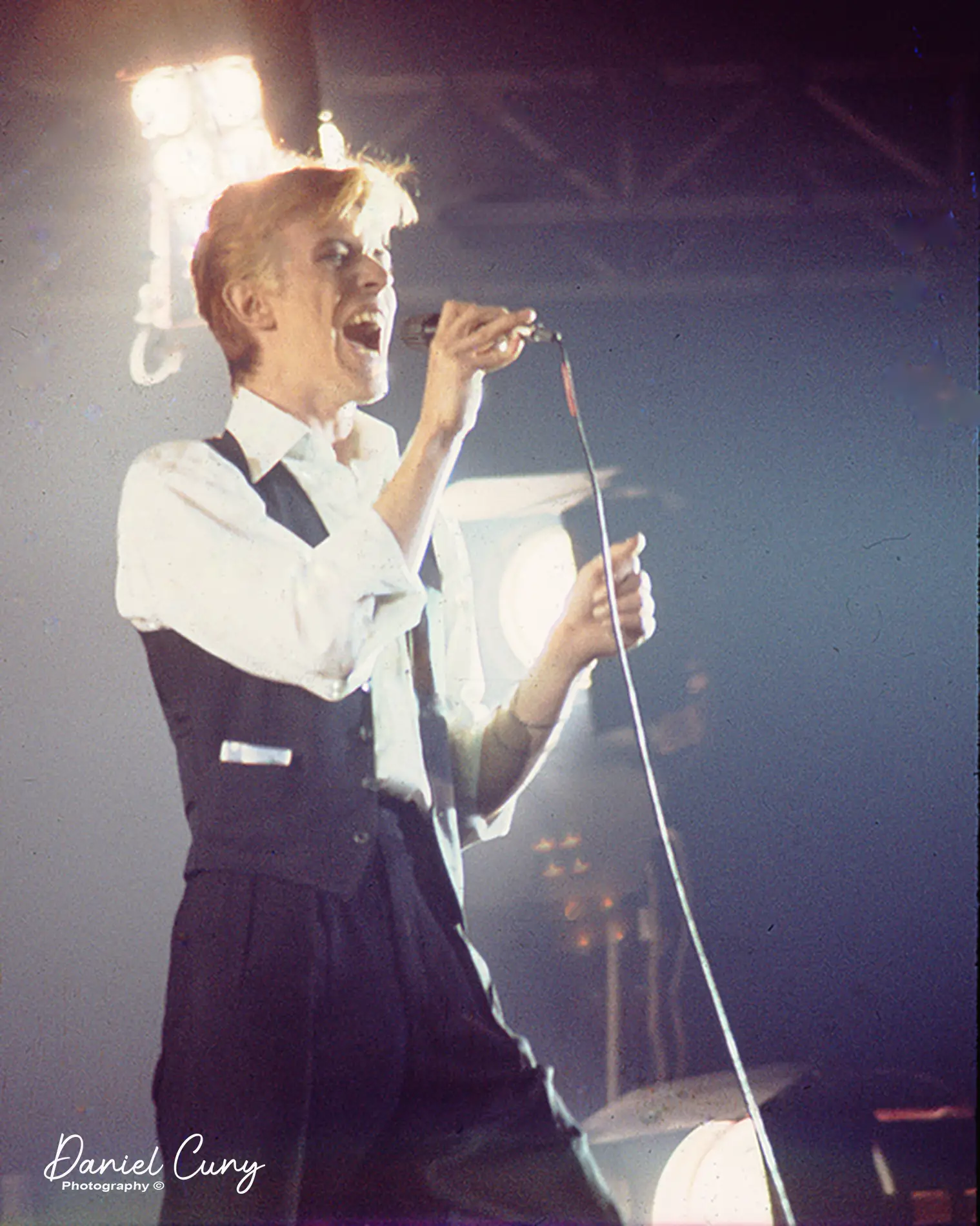



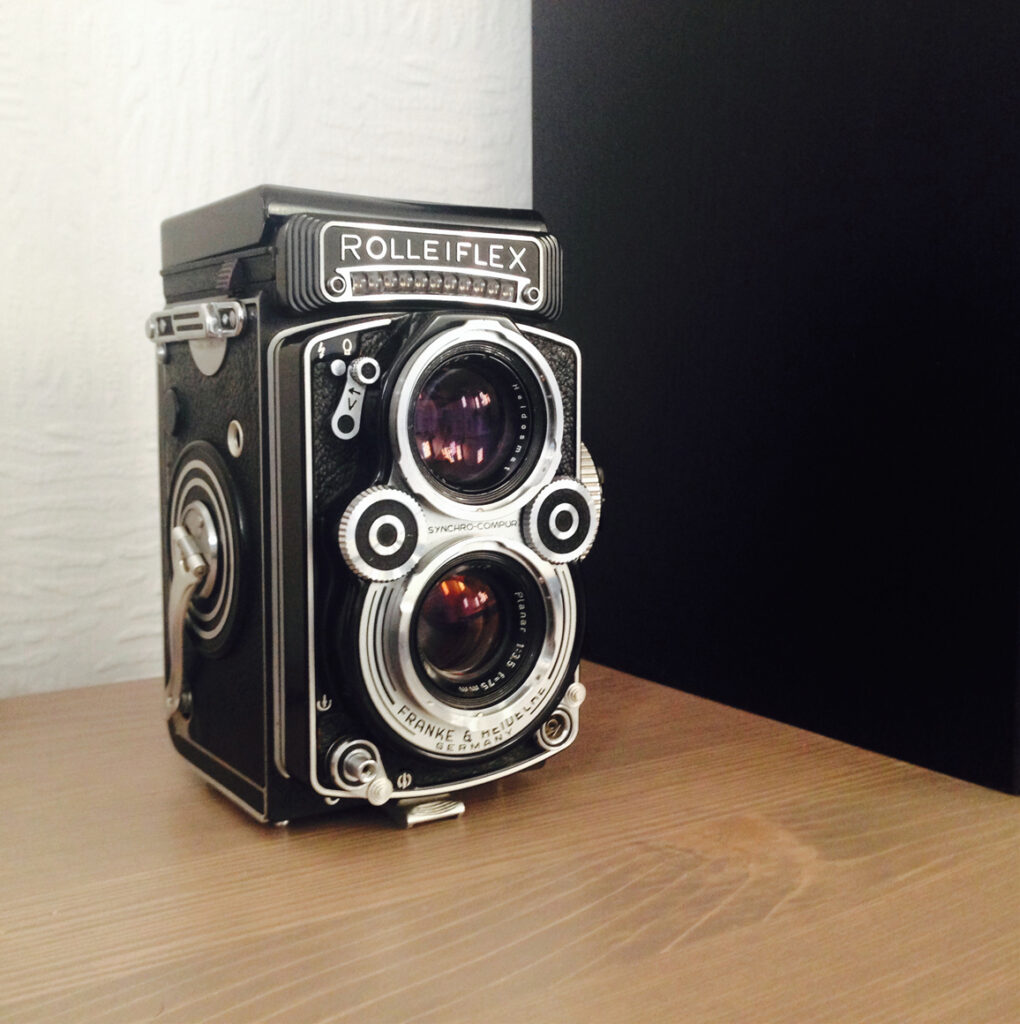




Comments
Dan on Photographing Concerts in the 1970s & ’80s – By Dan Cuny
Comment posted: 05/08/2020
Calum on Photographing Concerts in the 1970s & ’80s – By Dan Cuny
Comment posted: 05/08/2020
BG on Photographing Concerts in the 1970s & ’80s – By Dan Cuny
Comment posted: 05/08/2020
Pete on Photographing Concerts in the 1970s & ’80s – By Dan Cuny
Comment posted: 05/08/2020
Omer on Photographing Concerts in the 1970s & ’80s – By Dan Cuny
Comment posted: 05/08/2020
Well done.
Jamie W on Photographing Concerts in the 1970s & ’80s – By Dan Cuny
Comment posted: 06/08/2020
D Evan Bedford on Photographing Concerts in the 1970s & ’80s – By Dan Cuny
Comment posted: 06/08/2020
DeeDee on Photographing Concerts in the 1970s & ’80s – By Dan Cuny
Comment posted: 06/08/2020
Bill on Photographing Concerts in the 1970s & ’80s – By Dan Cuny
Comment posted: 06/08/2020
Comment posted: 06/08/2020
Axl on Photographing Concerts in the 1970s & ’80s – By Dan Cuny
Comment posted: 06/08/2020
Nigel H on Photographing Concerts in the 1970s & ’80s – By Dan Cuny
Comment posted: 06/08/2020
Charxakta on Photographing Concerts in the 1970s & ’80s – By Dan Cuny
Comment posted: 07/08/2020
Michael on Photographing Concerts in the 1970s & ’80s – By Dan Cuny
Comment posted: 09/08/2020
Comment posted: 09/08/2020
Comment posted: 09/08/2020
Film Friday: Photographing music legends of the 1970’s and 80’s: Digital Photography Review – Gadgets Specialist on Photographing Concerts in the 1970s & ’80s – By Dan Cuny
Comment posted: 14/08/2020
Film Friday: Photographing music legends of the 1970's and 80's | iTech News on Photographing Concerts in the 1970s & ’80s – By Dan Cuny
Comment posted: 14/08/2020
Movie Friday: Photographing music legends of the 1970's and 80's: Digital Images Evaluate | GREAT NEWS on Photographing Concerts in the 1970s & ’80s – By Dan Cuny
Comment posted: 14/08/2020
Film Friday: Photographing Music Legends Of The 1970's And 80's | World Best News on Photographing Concerts in the 1970s & ’80s – By Dan Cuny
Comment posted: 14/08/2020
Film Friday: Photographing music legends of the 1970's and 80's | | Xpert Reviews on Photographing Concerts in the 1970s & ’80s – By Dan Cuny
Comment posted: 14/08/2020
JL Williams on Photographing Concerts in the 1970s & ’80s – By Dan Cuny
Comment posted: 15/08/2020
Comment posted: 15/08/2020
Stacy Baird on Photographing Concerts in the 1970s & ’80s – By Dan Cuny
Comment posted: 16/08/2020
Mike B on Photographing Concerts in the 1970s & ’80s – By Dan Cuny
Comment posted: 16/08/2020
Comment posted: 16/08/2020
Mike B on Photographing Concerts in the 1970s & ’80s – By Dan Cuny
Comment posted: 16/08/2020
Alexandre Pontes on Photographing Concerts in the 1970s & ’80s – By Dan Cuny
Comment posted: 24/08/2020
Weston Chantler on Photographing Concerts in the 1970s & ’80s – By Dan Cuny
Comment posted: 10/07/2022